Notes from Our Oct. 1, 2021 Meeting
It was great to be back in the groove with an in-person meeting. Dean, Phil, Hank, Silivio and I were in attendance. Hank was very stylish with his SpaceX Falcon 9 shirt.
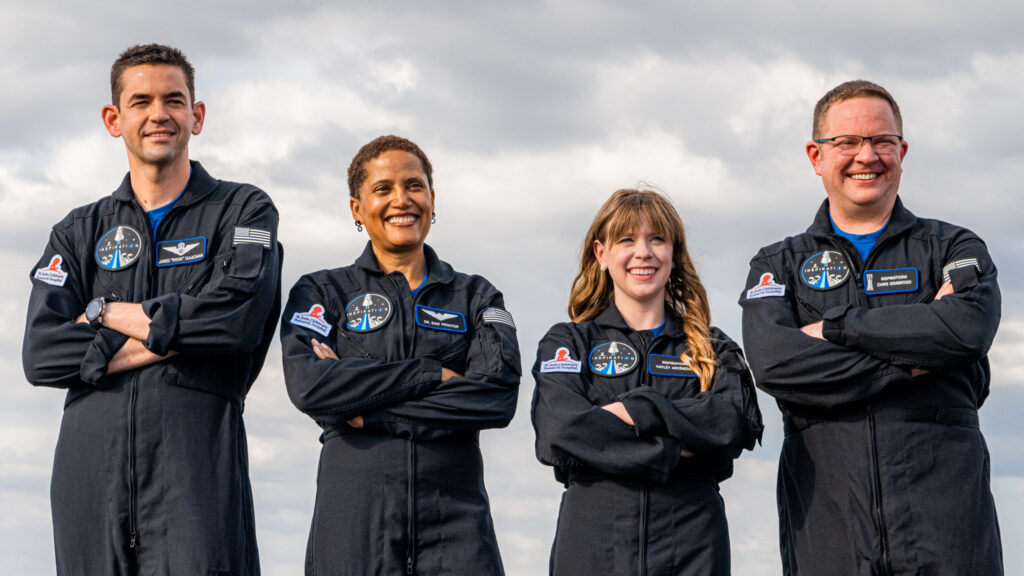
Preliminaries
After exchanging pleasantries, we plunged into “Preliminary topics”. I told the group that Dean had shared his Great Courses program “Introduction to Astrophysics” with me. After 2 months, I’m only through 4 of the 5 DVDs, but that is because I’m savoring it like a fine wine. There are a total of 24 half hour lectures and a book to reinforce the lecture material. The quiz problems are a challenge and I’m up to 20 pages of notes. I recommend it highly and Dean has already got me interested in his next Great Course “Understanding the Quantum World”.
I also told the group that I found an interesting Astronomy video series on YouTube by Phil Plait, the Backyard Astronomer, called “Crash Course Astronomy”. The 47 episodes are short at only 20 minutes or so, but I found them very informative.
Some of the factoids I’ve come across since the last meeting are: 1) from the Great Courses program, you might think the Sun is like an hydrogen bomb at its core but the heat given off by nuclear fission is only 300 watts per cubic meter. Your kitchen toaster is a 1000 watts! That’s a pretty mild energy density, but the Sun is enormous and there are a lot of cubic meters. Each second, the Sun turns 620 million tons of hydrogen into 616 million tons of helium; 2) from the Daniel & Jorge Explain the Universe podcast, all the planets placed side by side would fit in the distance from the Earth to the Moon. I was surprised the 240,000 miles distance to the Moon was large enough to fit Jupiter, Saturn, Uranus, Neptune and the rocky inner planets all within it; 3) from the Planetary Society, there are over 635,000 craters >=1km on Mars. Mars is small with only 38% of the Earth’s surface area, so that shows how bombarded the planets have been by asteroids. Only the Earth’s erosion and protective atmosphere has kept us from looking like a war zone.
The artificial meteor satellite, ALE-2, has malfunctioned. So the 400 or so pellets that organizations could purchase as light shows in the sky for special events won’t be happening. The recent Japanese Olympics was to be one of the first demonstrations of them. Plans are to launch a new satellite late in 2022 to try to establish the service again. Maybe the world can celebrate the end of the COVID-19 pandemic with a man-made cosmic light show.
My last “prelim” topic was a video by Paul Sutter, who does the “Ask a Spaceman” podcast, about the 5 biggest unknowns in astronomy. His list included: 1) what is Dark Matter & Dark Energy?; 2) alien life, are we alone?; 3) the evolution of stars & galaxies; 4) the origin of the universe; and 5) the nature of black holes. Our discussion of the items was lengthy.
Upcoming Launches
Some upcoming interesting launches include, Lucy launching October 16 on an Atlas V rocket. Be sure to watch the 4-minute YouTube video about the mission on the linked website. The attempted Starliner launch had to be removed from the launch pad at Cape Canaveral to make way for this mission’s rocket. Lucy will fly past 7 Trojan asteroids in Jupiter’s orbit and one main belt asteroid. We’ll have to wait until 2025 to watch the first fly-by. The $981 million mission is scheduled to last 12 years. It’s amazing the complex orbit maneuvers that the spacecraft intends to execute. For younger viewers, NASA has released a series of videos labeled as “Episodes 1-4” where the spacecraft is animated to explain what it will be doing.
Next up, should be the $250 million DART (Double Asteroid Redirection Test) on November 24 launching on a Falcon 9 rocket. DART will encounter the double asteroid Didymos (780m) and its moon Dimorphos (160m). Watch the 2-minute video about DART on the linked website. The impact of the washing machine sized probe into Dimorphos at 6.6km/sec (14,800 mph) will have the equivalent of 2.5 tons of TNT. The 5 million metric ton moon circles the larger asteroid every 11.9 hours. The impact should slow the orbit by 10 minutes. Astronomers can accurately measure the dimming and brightening period from earth because the moon eclipses the larger asteroid. Didymos is only a single pixel in Earth’s telescopes. DART includes ion thrusters and an IROSA roll-out solar array for electric power.
DART will be NASA’s first attempt of kinetic impact to study altering an asteroid’s path. It has enormous potential to help us understand this method for the protection of Earth from an asteroid impact. The “dinosaur killer” object that hit the Earth 65 million years ago was estimated to be 10 km in size. Dimorphos at .16 km is much smaller. Astronomers found the first asteroid Ceres in 1801. In 2005 the US Congress mandated that NASA find 90% of the >=140m NEOs (Near Earth Objects) or “city killer” asteroids. So far, only 40% have been found. The new satellite, NEO Surveyor, an infrared space telescope dedicated to the search for NEOs should speed up the search and has just been funded for launch in 2026. An asteroid only 20m in size, like Chelyabinsk, can cause damage. The Tunguska event in 1908 was a 50-80m object that leveled 770 sq mi of forest. The asteroid Bennu which Osiris-Rex is returning a sample of, is 500m in diameter.
Last up for launch this year will be JWST (James Webb Space Telescope) planned for a December 18 launch. It has been a long time in coming and concern for a successful mission is high. See Thomas Zurbuchen NASA’s science chief’s comments. JWST needs to travel 1.5 million km to the L2 Lagrange Point beyond the moon and after 50 deployments of the folded telescope with 350 single-point failure components. The telescope will have a 3 week deployment before it will take its first test pictures. If you thought the “7-minutes of terror” EDL (Entry, Decent & Landing) of the Mars rovers were agonizing, image JWST’s month of angst.
JWST has completed its final testing and has been folded back up and on September 30 shipment has begun from California to French Guiana. The barge trip is expected to take at least 2 weeks and includes passage through the Panama Canal. Details on its travels are sketchy due to the concern of pirates trying to steal the $10 billion telescope. There also will be another 6 months of commissioning time after it is fully deployed at the L2 Lagrange Point before it takes its first science pictures. One more test of the newly designed Ariane 5 fairing is scheduled for October 22. If that is a success, there will be no known issues with the JWST launch. NASA announced that it will stick with the name of James Webb Space Telescope. Some people have raised issues with James Webb’s treatment of homosexuals in the 1950s. “Cancel Culture” is powerful. I’m glad NASA stuck to its “guns” and didn’t react to the loudest shouts in the room.
Phil had a great idea to try for a watch-party of the JWST. December 18 will be a Saturday. As the launch approaches, we’ll have to see if the time of launch and coverage from French Guiana warrants going for the group event. If anyone has ideas, let me know.
The Sun
Launch Pad Astronomy on YouTube had a nice video about the new DKIST Solar Telescope in Hawaii. It has a great movie of the solar granulation and how the telescope works. It amazes me that those granules are the size of Texas. It also mentions the Parker Solar probe and how the Sun is beginning its new solar cycle. With the maximum solar activity scheduled for 2025, I probably shouldn’t be trying to follow it monthly but more on an every 6 month basis. From the Space Weather Prediction Center, the newest monthly sunspot numbers are: September 51.5 (predicted 19.7), August 22.4 (predicted 17.4), July 34.4 (predicted 15.5) and June 25.4 (predicted 13.7). The numbers are a little higher than predicted but reasonably close. I saw a new solar cycle tracking site from Belgium which has some interesting daily/monthly and monthly smoothed graphs of sunspot number and also a daily hand sketch of the sunspots. You can also check out SpaceWeatherWoman for solar information.
Manned Space
I haven’t heard too much about this in the press, but we set a record with 14 people simultaneously orbiting in space on September 15 with the launch of the Inspiration 4 crew of 4 people. Joining them in space were 7 people on the ISS, (3 from a Soyuz launch and 4 from a NASA Dragon launch) and 3 taikonauts on the Chinese space station. Earlier this year, on July 11, the record for number of people in space was set at 16 when Virgin Galactic had their 6 people flying in SpaceShip Unity for a brief 15 minutes. Even though there were more people in space for a quarter hour, to me, nothing beats orbiting for 3 days in a Dragon capsule as the true record setting occurrence.
With the large crew of 7 on ISS for this year, mankind has just set another record on September 21 for the most person-days spent in space during a calendar year. As of September 21, 2021, there have been 2196 person-days in space in 2021 breaking the old record set in 2010 of 2190 days.
The 2196 days come from primarily the crew on the ISS. The Soyuz MS-17 crew of 3 spent 106.2 days in space (318.6 person-days). The Dragon CREW1 crew of 4 spent 121.3 days in space (485.2 person-days). The Soyuz MS-18 crew of 3 has spent 165.7 days in space as of 9/21 (497.1 person-days). Lastly, the Dragon CREW3 crew of 4 has spent 151.6 days as of 9/21 (606.4 person-days). That gives the ISS a total of 1907.3 person-days for 2021 which is the vast majority of time spent in space this year. The remaining time comes from the Inspiration 4 mission with its crew of 4 adding 12 person-days and China’s Shenzhou 12 mission crew of 3 adding 276.6 person-days. The 12 short sub-orbital fliers this year from Blue Origin and Virgin Galactic only contributed a total of .12 days.
October is going to be a record setting month too. There are up to 5 manned launches in the month potentially adding 19 to the 2021 count of people in space. Here is the plan: 1) on October 5, Soyuz MS-19, with a Russian actress and her director plus one cosmonaut will spend 12 days on ISS filming a movie. American astronaut, Mark Vande Hei, has to stay another 6 months on ISS even with his pinched nerve in his neck because the Russians are sending tourists on the Soyuz capsule. His extra 6 months will take him to March 2022 with 353 days in space. This duration will break Scott Kelly’s US record of 340 days; 2) on October 16 (?), China’s Shenzhou 13 will send a new crew of 3 to their space station. China is not very good on sharing information, the exact date of the launch and even the names of the crew members are unknown; 3) on October 30, US crewed Dragon with CREW3 with 4 people should launch for a 6 month stay on ISS; 4) a suborbital Virgin Galactic (VG) flight in mid-October with 3 Italian Air Force should occur if the possibly defective part in the flight control system is deemed “ok”. The FAA cleared VG of the “off-course” situation on their last flight by giving them a bigger no-fly zone; and finally 5) on October 12, Blue Origin with a crew of 4 including possibly William Shatner of Star Trek fame. If Shatner flys, he will set the record for the oldest person in space at age 90. This will break Wally Funk’s record set this July when she was 82. I’m a little concerned for Shatner because Funk was an experienced pilot but Shatner’s only experience was swaying back and forth on the set of Star Trek. Other passengers announced for the New Shepard flight are Chris Boshuizen (Australian born and never got his US citizenship after working 14 years in the US. He also co-founded “Planet” a company that operates 3 satellite constellations and was a space mission architect at NASA Ames Research Center where he co-invented the NASA Phonesat, a cubesat based on off the shelf smart phone components) and Glen de Vries (trustee of Carnegie Mellon University, author of a book on precision medicine and an instrument rated private pilot). Both of them participated in the auction where a $28 million bid won a seat on the first flight of New Shepard, but due to a scheduling problem the winner do not fly on the mission but assigned the seat to 18 year old Oliver Daemen. The count for 2021 of people going into space is currently 26, but by the end of October the count be 45. Here is our latest status of our MASS Prize.
Inspiration 4 was a phenomenal mission and Netflix has a 5 part documentary of the flight and its participants. The biggest trouble with the flight is that the fan on the toilet broke down and the toilet was located just next to the viewing port. When fans break on space toilets it is more than just odor that can waft around the capsule. TMRO did a nice job summarizing the mission in this 4 minute video. The core reason for the mission was to raise $200 million for St. Jude’s Hospital. Elon Musk contributed $50 million so that Jared Issacman’s goal could be reached.
My count for the total number of people who have gone into space is 594. This site from SuperCluster is the best for keeping track of the count. I’ve reduced their count of 595 by 1 because for some reason they skipped number 575 between Christina Koch (576) and Beth Moses (574). If anyone knows why they did this I’d appreciate knowing.
Mars
It seems a little harder to follow news about the Perseverance Mars rover and the Ingenuity helicopter than previous missions. Maybe it is due to the pandemic or just the priorities of the mission manager. On September 29, Ingenuity spun its blades at 2800 rpm rather than standard 2500 rpm but due to slight wobble in servo motors flight 14 was called off. The hemisphere of Mars where Percy and Ingenuity are located is going into winter and the Mars atmosphere is getting thinner as it freezes at the pole. Lucky our rovers are nuclear powered, so they are not affected by the lessening solar radiation. Also Mars has just gone into conjunction with the Sun, having Mars so close in the sky to the Sun makes communication unreliable. Rather than risk sending an erroneous command to the rovers, NASA will stand-down from communication for a couple of weeks.
Percy was able to take its first two successful rock samples after its first attempt was too brittle and the “paver rock” sample just turned to dust as the rover tried to drill into the surface rock. Scientists picked a rock named “Rochette” that was sitting on the surface and demonstrating that it was much more durable. Here is a map showing the current location of Percy and its route as well as Ingenuity’s current location.
This map shows the route of both Percy and Ingenuity. You can see the way Ingenuity can take a straight line right over dune fields and make much quicker progress than the rover. Here is a chart of the 13 flights of Ingenuity.
Our other rover, Curiosity, put out a great 3 min video of its travels up Mount Sharp in Gale Crater. There has been no news about the Chinese rover since end of August when it completed its 90 day nominal mission.
Moon
Another NASA program that hasn’t gotten too much press is the CLPS (Commercial Lunar Payload Services). If you remember the Lunar X Prize from a couple of years back that did not successfully end with any moon landings, NASA had now contracted with many of the teams to send payloads to the moon. There are at least 7 missions contracted for landings in the 2022-2024 timeframe. Here is a list.
- In 2022, the Peregrine 1 launching on the initial flight of the new ULA Vulcan rocket. The company Astrobotic will be sending 11 payloads for NASA to Lacus Mortis a lava tube location using its Peregrine lander.
- In Q1 of 2022, the IM-1 mission from Intuitive Machines with 5 payloads to Oceanus Procellarum using its Nova-C lander and launching on Falcon 9.
- In November 2023, Masten Space Systems will send 8 payloads to the south pole of the moon using its XL-1 lander and launching on Falcon 9.
- In Q4 of 2023, Intuitive Machines IM-2 mission with PRIME-1 (a drill that can drill 3 feet into the moon searching for water ice) to south pole on another Nova-C lander using a Falcon 9.
- In Q4 of 2023, Astrobotic will send the VIPER rover to south pole near Nobile crater using its Griffin lander. It will launch on a Falcon Heavy rocket.
- In 2023, Firefly will send its Blue Ghost lander to take 10 payloads to Mare Crisium using a Falcon 9 rocket.
- In Q1 of 2024, Intuitive Machines IM-3 mission with Nova-C lander launching on Falcon 9.
The “Angry Astronaut” made a good video about the first Peregrine 1 mission. He posted the video at the end of March, so keep in mind that the mission is now delayed until 2022.
The other 2022 mission by Intuitive Machines is described here.
NASA also recently announced the destination for the 5th mission which includes the VIPER rover. The link has a nice video describing the location.
Before we could get to the remaining topics we ended the meeting at 10:15 PM. I thanked everyone for their attention. The video of the granulation of the Sun seemed to be the most popular. Here is the last couple sets of topics to complete my notes.
NASA
NASA announced a re-structuring of its manned space flight directorship. The Human Exploration and Operation Mission Directorate (HEOMD) is being split into Space Operations Mission Directorate (SOMD) under Kathy Lueders which will oversee the ISS, Commercial space programs and sustaining operations on and around the Moon and Exploration Systems Development Mission Directorate (ESDMD) under Jim Free which will control Artemis with SLS, Orion, HLS and plan the Moon to Mars strategy. HEOMD has grown to over half of NASA’s budget. This is possibly a political way to get Lueders, who developed the commercial crew and cargo programs out of the way so that more “old-school” methods can be used with SLS and Orion and HLS (Human Landing System). The new structure is sort of how NASA was organized in 2011 before they combined Space Operations and Exploration Systems into HEOMD after Constellation was cancelled and the Shuttle retired.
Blue Origin’s suit over how the HLS contract was awarded to SpaceX should be resolved by November 1. The $2.9 billion award to SpaceX for development of a lunar StarShip variant will be in limbo until that time. Marcus House had a video describing SpaceX’s plan. This suit can only delay the Artemis program which is trying to return us to the moon by the aggressive goal of 2024. It shows that Jeff Bezos and his Blue Origin company are a bunch of whinny losers. They bid $5.99 billion for their flawed lander which was not reusable and had a 30 ft lander which would be a challenge to any astronaut in a space suit. Dynetics, which was the third finalist in the bidding, was the most expensive at $9.1 billion for their Alpaca lander. But after their objection to the award was denied by the GAO, they decided to go for the subsequent “sustainable” lander award rather than hamstring the government with a lawsuit. Publicity for Bezos is getting worst by the minute now that 20 former and current employees say that the New Shepard is a dangerous vehicle and the corporate environment at Blue Origin is “toxic”.
Will Starliner ever fly? Boeing has still not found the root cause of the stuck thruster valves and Kathy Lueders said their unmanned test flight might not launch until 2022. I remember they were on the launch pad ready to make their second unmanned test flight the day we had our 10th anniversary meeting on July 30. The valves are in the service module and are corroded shut and possibly an entire new vehicle might be required. On August 15 the launch was delayed indefinitely as Boeing tries to find the root cause of valve issue. Rain or humidity might have reacted with the propellant and created nitric acid that corroded the valves. Starliner has been removed from the rocket and sent back to the factory for evaluation. Angry Astronaut feels we should drop Starliner and man-rate the Dream Chaser. Sierra Nevada is doing the process on their own and they might have it done by 2026. NASA money would really accelerate the process. I think there has to be a point where Boeing’s incompetence makes the Starliner too risky for manned flight. The stuck valves would be required for the emergency escape system if problems develop on the launch pad or the ascent into orbit.
Russia throws an American astronaut under the bus to deflect criticism of the ISS module manufacturing. They blame Serena Aunon-Chancellor for the 2 mm hole discovered in August 2018 in a Soyuz module. The hole would have depressurized the station in about 2 weeks if left unchecked. It was patched by cosmonauts and Soyuz was deemed save for the crew of 3 to return. Sergey Prokipyev, ESA’s Alexander Gerst and she landed safely in the Soyuz on December 20, 2018. Results of a Russian spacewalk to inspect the hole from the outside were never released. Russia released that she had been diagnosed with deep vein thrombosis while in orbit. Ultimately, 8 holes were discovered but only one went all the way through the hull. A video camera was not working in the area of the ISS. NASA astronauts refused a polygraph test from Russian authorities and cosmonauts were not allowed to assess US tools on the space station. The US feels a technician on earth caused the holes and tried to cover it up by applying some super glue. NASA public relations just avoided the issue and story to not give it any more publicity than necessary.
NASA has recalculated the chance that the asteroid Bennu will collide with the Earth. On September 24, 2182 Bennu will make another close approach but the chance of impact is only 1 in 2700 or .037%. The calculation is based on 2 years of Osiris-Rex analysis in orbit around Bennu. Through the year 2300, the estimate increases to only 1 in 1750. The asteroid Bennu or 1950 DA at 500 meters still remains as one of the two most hazardous asteroids to Earth. It would wipe out a continent, even though it is only one twentieth the size of the one that killed the dinosaurs. 2135 will be the next close approach. The Yarkovsky effect (caused by the rotation and emittance of thermal energy from the asteroid surface) was estimated to be a force equivalent to the weight of 3 grapes. Because of the uncertainty in the Yarkovsky effect, calculations of asteroid orbit into the far future could be inaccurate. In a 50 year timeframe, the use of impact deflection could be effective against Bennu. Here is possible plans from the Chinese and the US to deflect it (watch the video from the 5:50 mark to 9:00).
SpaceX
On August 6 StarShip became the biggest rocket ever constructed. Compare the size of Starship compared with a Saturn 5 and the Space Shuttle. Here is a picture of Starship compared to various rockets including SLS, Saturn 5, N1, and Falcon Heavy listing their height and lift capacity to LEO.
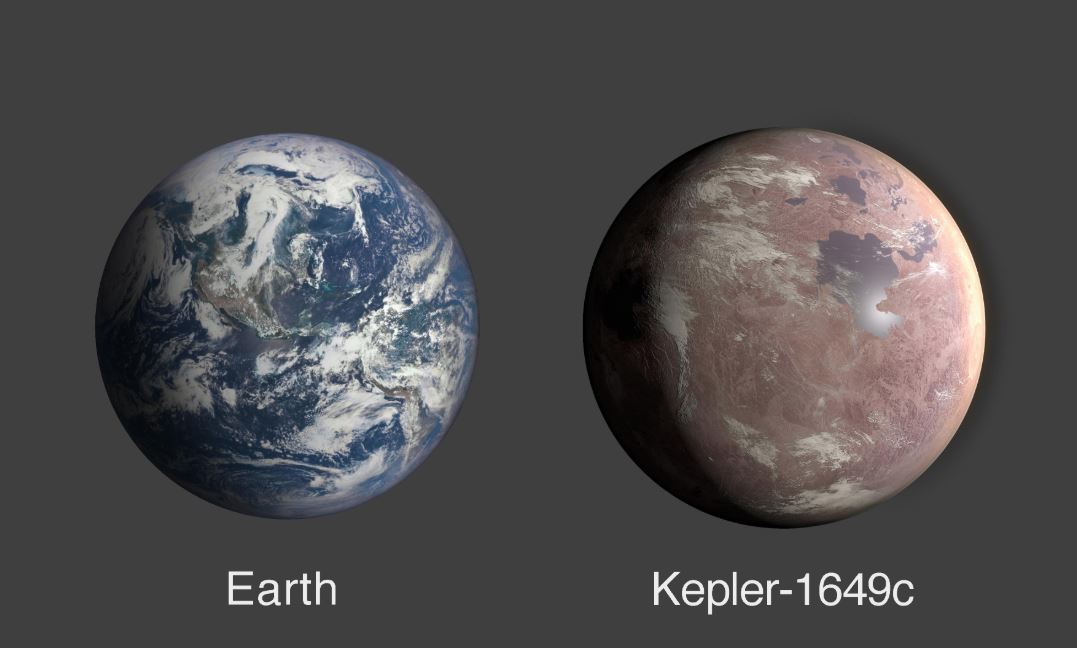
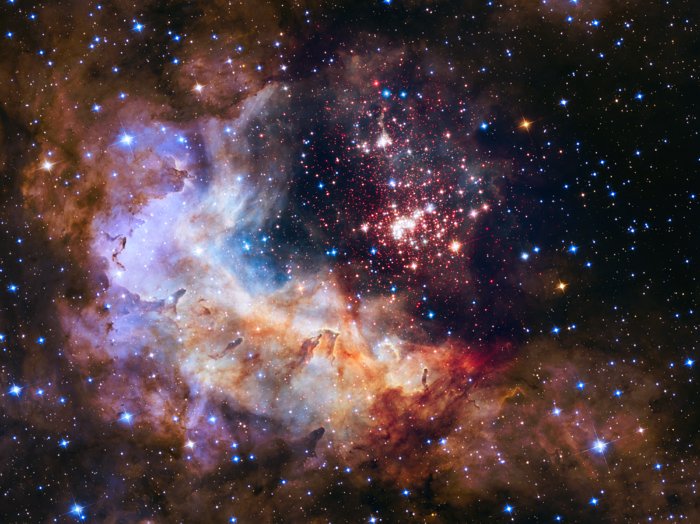
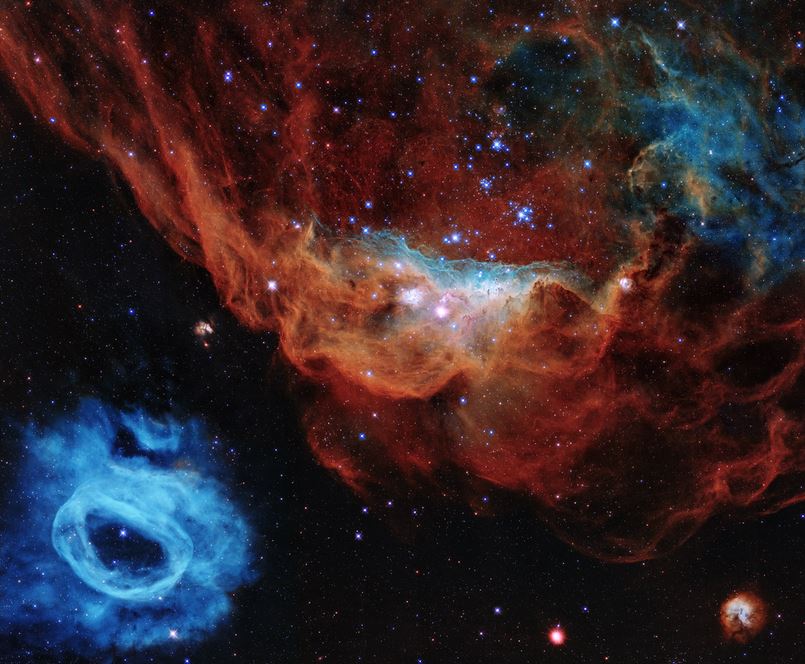
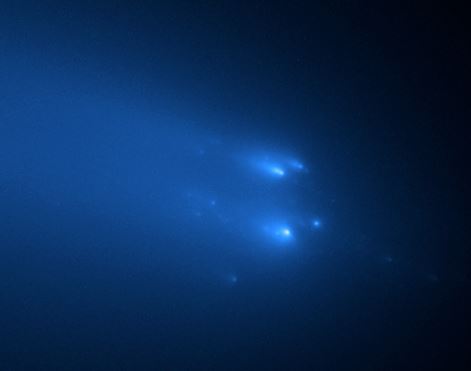

Recent Comments